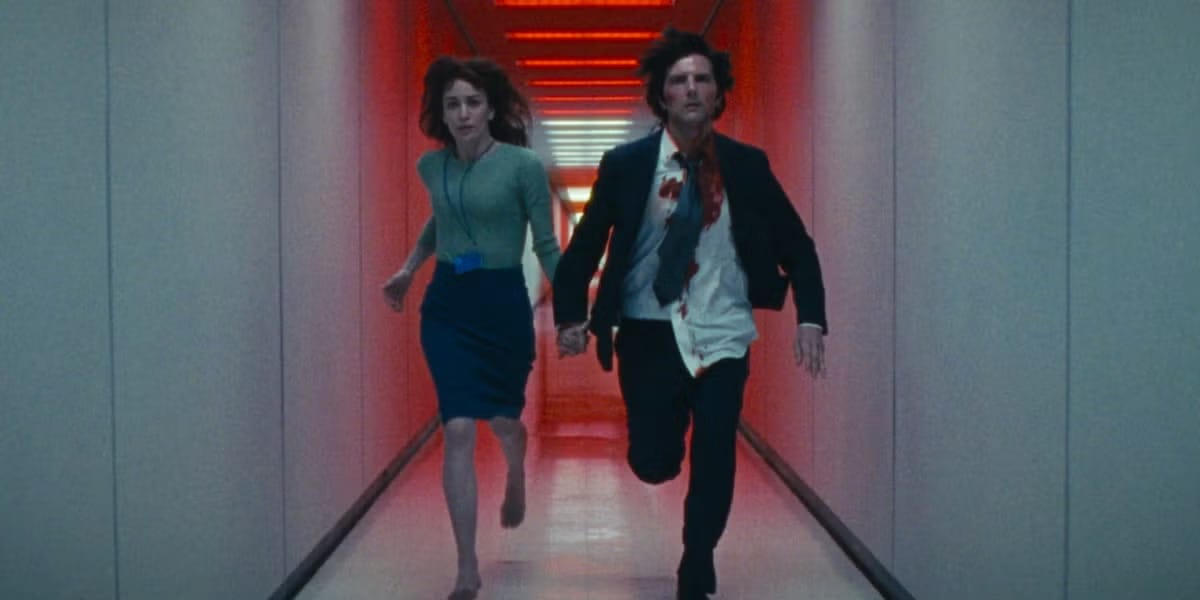
This article contains spoilers for the Season 2 finale of Severance, as well as the other films discussed herein, being as it is a discussion of endings.
Mark and Helly are running. Not running anywhere in particular, not running towards or away from anyone or anything, just running. The camera follows them down the labyrinthine halls of Lumon’s severed floor, with handheld jitters that contrast the sharp, robotically programs swings it made to capture Mark’s season-opening mad dash. Hand in hand, they turn corner after corner. The red emergency lights slither through the hallways, reminding them that they cannot run forever. Eventually, someone will catch up with them, and they will have to face consequences for their choices. They keep running. They move down one corridor, straight towards us, and mid-stride the image freezes. We zoom into their faces, their eyes set somewhere further down this endless maze of white hallways. What do we see there? Fear? Defiance? Relief? All three? We fade to a solid red, and the credits roll. Severance will eventually return for a third season, and when it does we will see what happens to Mark and Helly, what becomes of the bizarre love hexagon that they have tangled themselves in, and of Dylan and Irving and all the other characters left in precarious positions. But for the next couple years, Mark and Helly will still be running.
Severance ending its second season on a freeze frame is a notable decision largely because the practice has fallen out of style in the last few decades. The common conception of a freeze frame ending today identifies it with something like “Hey, Scotty. Jesus, man!”, but the practice has a proud history from the French New Wave to some of the most popular American films of the ‘70s and ‘80s. George Lucas once remarked that the only parts of a movie that really matter are the first five minutes and the last twenty. The freeze frame ending takes this idea even further, giving outsized importance to a film’s very last moment, stamping it definitively as the image we are meant to take away from the film. It is true with any film that the story ends with its final shot, and nothing further occurs beyond that point, but most films try to disguise this, inviting us to imagine that its world keeps turning and its characters have lives that extend beyond its reels. Freeze frame endings instead make a point of stopping time at story’s end, emphasizing that we will go no further. The moment the film chooses to freeze on becomes then the moment its world and characters are stuck in for eternity. The nature of that moment, then, becomes a final, irreversible verdict, a state we remain in for all time.
This post is for paying subscribers only
Subscribe now and have access to all our stories, enjoy exclusive content and stay up to date with constant updates.
Already a member? Sign in
